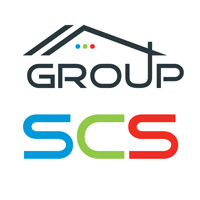As with all mechanical and electrical services within buildings, a smoke control system is only effective if it is adequately maintained and kept in good working order. Should a fault occur between tests, it is important that it does not go unnoticed and that a regular weekly or monthly test is not overlooked due to the unavailability of personnel. The self-testing and remote monitoring of smoke control systems can help ensure that your systems are working properly and that you stay compliant. Read on to see our suggestions and advice on the matter.
Keeping an eye on your smoke control system
Proactive maintenance and early detection
One of the most important advantages of remote monitoring is that it can be carried out 24/7 and systems can send an alert any time of the day so that any issues and failures can be addressed immediately. Without remote monitoring, an issue might go unnoticed for days or weeks. This means that if a fault occurs, the system or component would remain inoperable until the next scheduled maintenance visit, impacting fire safety should an incident occur.
Increased testing effectiveness
Regular testing, including the opening and closing of actuators and the operation of fans (where appropriate) is essential to overall fire safety. Should any issues arise during testing, then prompt action can be taken to resolve problems before they become incidents. Being able to schedule regular weekly and monthly tests of every component on the system overcomes the time consuming and expensive task of manually checking every floor in a multi-storey building on a regular basis. A monitoring solution that can automatically self-test a smoke control system on a scheduled basis helps avoid the potential issue of such tests being overlooked due to budget pressures, or lack of personnel.
Save call-out costs or wasted visits
The ability to securely access, test and diagnose any issue remotely can improve the productivity of maintenance operations, save on call-out costs or avoid any unnecessary visits. Maintenance personnel can be directed straight to the area or system components where the problem originates and swiftly resolve issues . For instance: If a head of stair vent was staying open because someone had used the override switch, then the system could be reset remotely avoiding an unnecessary visit. In addition, software updates of control panels can be applied remotely from a service centre without the need for a site visit.
Peace of mind and compliance
Remote monitoring can provide organisations with essential insights to the overall health of their system. They ensure that system failures are detected and rectified promptly and is a cost-effective way for building owners to fulfil their obligations under the Regulatory Reform Order (Fire Safety) 2005. Furthermore, regular test reports can be issued to the building operator or facilities manager to certify that the system is healthy for compliance with RRO 2005.
Remote monitoring does not replace the need for annual service visits, but will give building owners peace of mind that the life safety systems are being monitored and tested.
Group SCS’s Eyeball Solution
Eyeball Advanced Self-testing & Remote Monitoring
The Eyeball advanced monitoring software can be programmed to schedule weekly tests of every component on the system and to issue a compliance report to the building operator or facilities manager to certify that the system is healthy. This can be by email or text message. Any faults occurring are detected and a message is sent to the facilities manager and the smoke control maintenance specialist. Remote interrogation and testing can be carried out at any time via the internet.
This unique product reduces visits to site, ensures that system failures are detected and rectified promptly and is a cost-effective way for building owners to fulfil their obligations under the Regulatory Reform Order.
The solution is compatible with newly shipped or upgraded SCS/Easivent EV-300 shaft systems.
Eyeball Classic and Basic Remote Monitoring
Eyeball is also available with reduced capabilities for use with older and 3rd-party smoke shaft systems:
- Classic Remote Monitoring Service that provides monitoring of component and system alarms/events for existing installed SCS/Easivent EV-300 shaft systems and legacy ASI systems
- Basic Remote Monitoring Service that provides a basic alarm monitoring solution for all SCS/Easivent legacy shaft systems and most 3rd-party systems.
These solutions do not offer self-test capabilities. If you are not sure on the suitability of your equipment please contact our service team.
For further information, you can visit our Eyeball product page and take a look at the video below for a step-by-step demonstration of Eyeball’s functionality.


